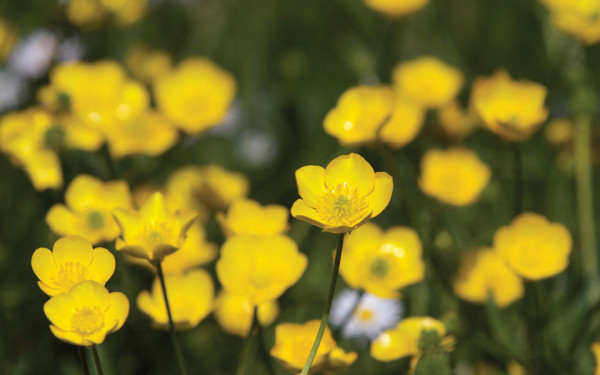The Color of Butter
For a Germanic word with five of its six letters so harsh-sounding, “butter” is fairly pleasant in spoken English. Of course, in Spanish “mantequilla” sounds prettier, but that’s true of most words in Romance languages. Maybe it’s the smooth, rich taste of butter on toast that we think of, or butter dripping from a hot ear of corn, that coaxes a smile when we say the word butter.
Or is it the color? Butter is a sunny, bright, warm color, with memories of happy days, children playing in a field, picking wild buttercups for a little bouquet. Ah, remember holding a buttercup under young friends’ chins to see if they like butter?
Or maybe it’s that flower itself? Formally, buttercups are ranunculus, ranúnculo in Spanish, from the Latin for “little frogs,” of all things. And there are over 600 species of ranunculus around the world, mostly growing wild from Svalbard at the top of the Earth to Tierra del Fuego near the bottom.
Only a few species of ranunculus are native to Central America, but hundreds of varieties have spread here, involuntarily carried by migrant birds or mixed in grain seeds. Some types have many dense petals on the blossoms, others a few buttery petals spreading out like captured fireworks. Some ranunculus flowers are as large as the quetzal coin, other species have tiny blossoms. All are pale to rich dark yellow, varying as butter does with the seasons.
Sure, ranunculus are poisonous to horses and cattle, but animals are put off by the bitter taste and don’t eat enough to get hurt. Neither do we. Buttercup-yellow is there for us to enjoy as we did when children, points of sunshine along pathways, or in shaded areas with enough moisture to keep ranunculus happy.
Ranunculus blossom year-round here, but this warm, sunny season with just enough rain makes them plentiful now. Watch for them—see how many bits of butter you can spot in Altiplano fields.
